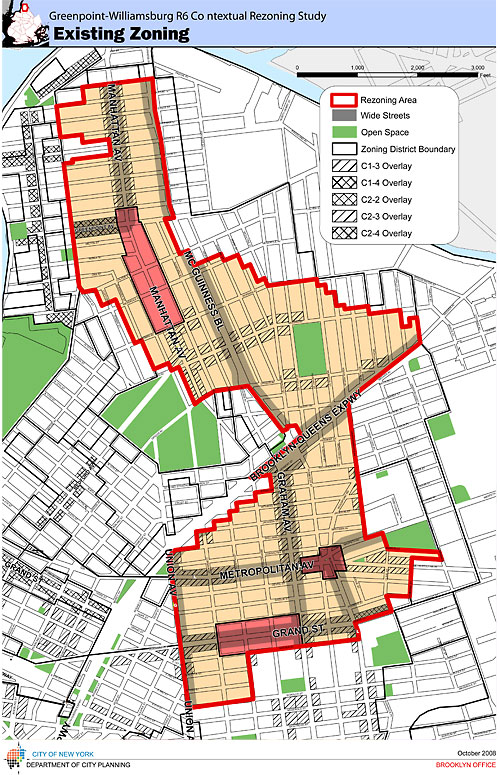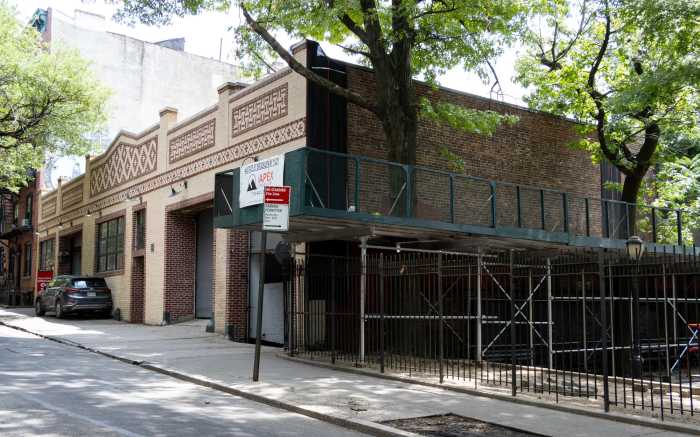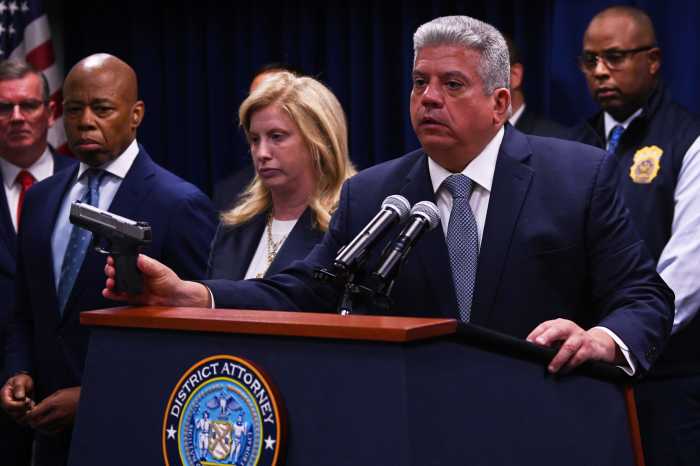Greenpoint and Williamsburg are about the get shorter.
Community Board 1 voted on Monday to support the city’s plan to cap the height of new developments in the broad inland portion of two neighborhoods that have been transformed by skyscraping construction.
Last fall, the Department of City Planning unveiled its so-called “Greenpoint-Williamsburg Contextual Rezoning,” which aims to establish height limits on new buildings for a 175-block stretch extending from Clay Street in the north to Maujer Street in the south. The plan would cap edifices at 50 feet on the narrow residential streets that make up 80 percent of the area, and 70 feet on many wider residential streets.
“This is a really good project,” said Ward Dennis, chair of CB1’s land-use committee, which backed the city proposal earlier this month as a way of mitigating the unseen affects of the controversial 2005 rezoning that permitted high-rise construction along the Williamsburg and Greenpoint waterfront.
Supporters of the downzoning cited several “finger” buildings that stick out far above the mostly low-rise streets in the area.
A handful of residents complained about minor points within the plan, which would deem a stretch of bustling McGuinness Boulevard as a residential area, bar certain commercial uses including second-floor retail on Metropolitan Avenue, and potentially allow new construction along the eastern section of Grand Street to rise higher than new buildings on the western portion of Grand Street, which was rezoned last year.
“I don’t think those caveats are small,” said board member Heather Roselund, one of three individuals to vote against the rezoning. “The Department of City Planning still has some work to do.”
Dennis dismissed Roselund and her bloc’s “no” vote as, indeed, small.
“This is 170 or 180 blocks of contextual zoning, which is something we have pushed very hard for,” he said. “If, at the end of the day, we have about 10 or 15 blocks where we have disagreements, I don’t think that’s a reason to oppose the whole rezoning.”
In the end, the nearly unified board approved the city rezoning, though it did it some of the objections as a proviso.
The board’s vote, though only advisory, is the first step in the eight-month land-use review process, which now heads to Borough President Markowitz before votes by the Department of City Planning and the City Council.


























